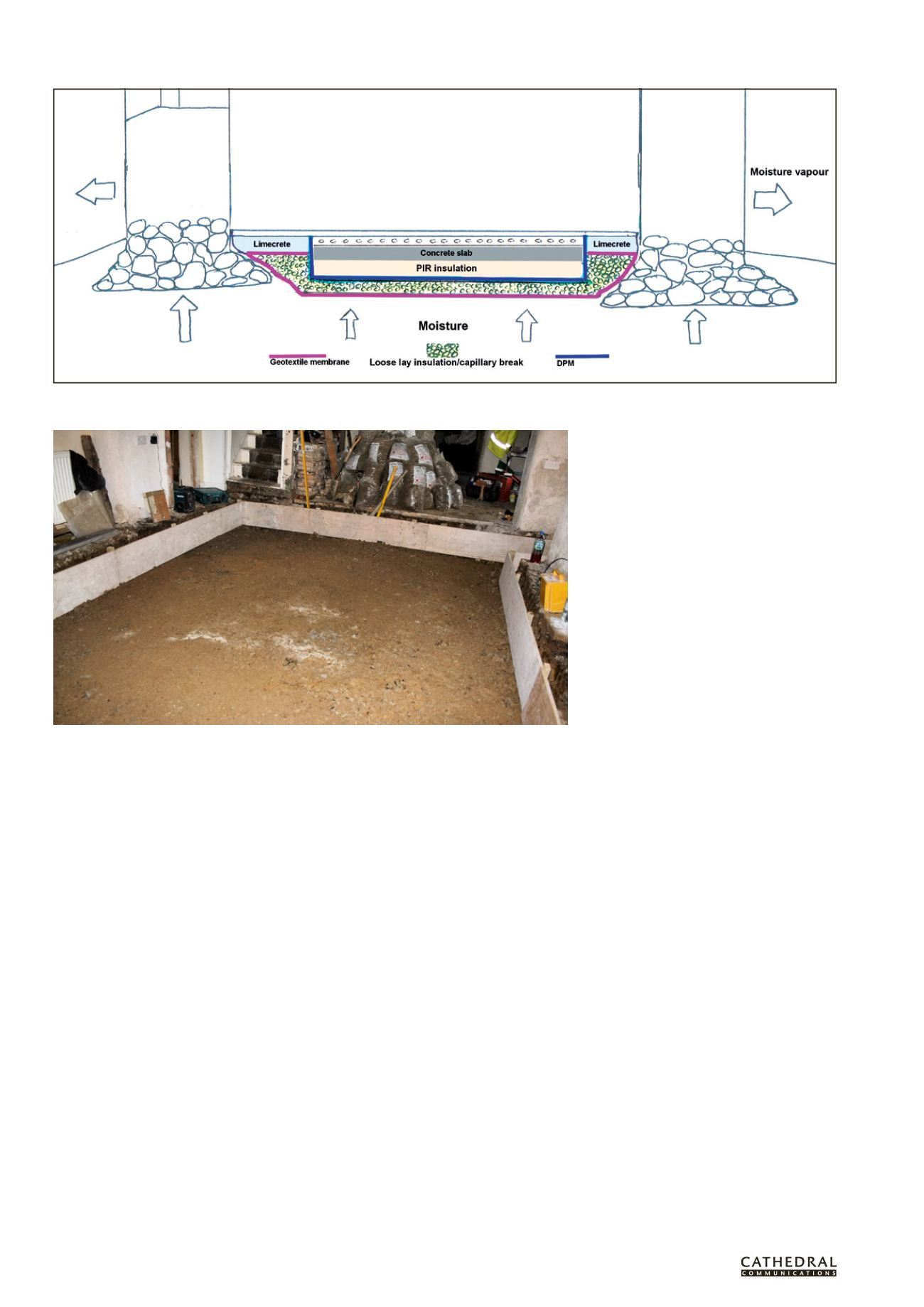
1 8 0
T H E B U I L D I N G C O N S E R VAT I O N D I R E C T O R Y 2 0 1 4
T W E N T Y F I R S T E D I T I O N
INTERIORS
5
SELECTING THE BEST OPTION
There are many options available to specifiers
of solid floors in traditional buildings. Some
options work better than others and some
might cause irreversible damage or loss of
historic fabric. It is important to appraise the
individual building and make an informed
decision on which build-up is most appropriate.
Whether a new concrete slab is to be
constructed or a traditional earth floor is to be
retained, damp problems must be dealt with
first, and there are a number of other key issues
to be considered before deciding on the best
solution:
Is it necessary to dig up the floor?
It might
not be desirable aesthetically, practically or
legally. Can the floor be repaired rather than
excavated?
Is the floor of architectural/historic
interest?
Removing or disturbing an original
feature can damage the character and historic
record of a building as well as its financial
value.
Is the building listed?
Always check that
the building isn’t listed and apply for listed
building consent if required.
Is the building in a Radon area?
It is very
likely that a DPM will have to be included if
Radon is present. The potential adverse effects
of a DPM barrier can be largely negated by the
introduction of loose-lay insulating aggregate
beneath (such as lightweight expanded clay or
glass foam granulate).
Is the work reversible?
Fashions come and
go and what the current owner considers an
essential modernisation or improvement may
be thought of as undesirable in years to come.
Is it possible to carry out the work in a way
that minimises damage to the original fabric,
and can it be undone at a later date?
If a new solid floor is required, how
should it be detailed?
Options include
a modern slab, a traditional earth floor,
a limecrete floor, and various hybrids.
Instead of a DPM a capillary break can be
created by introducing a layer of insulating
lightweight clay aggregate or recycled glass
foam granulate. One danger associated
with limecrete floors is the potential need
to excavate to a greater depth than the
foundations. This can destabilise the building,
so great care should be taken to establish how
deep the foundations are before selecting the
floor type. Two or three test pits by the walls
could be dug to allow a plan to be formulated.
How should the floor be finished?
If a
vapour permeable solution is chosen then
it is important to note that the whole of the
floor should conform to this, including any
adhesive or covering employed. For example, a
ceramic tile, cementitious adhesive or rubber
carpet underlay will all create a barrier to
permeability and should be avoided unless
used where a DPM is appropriate.
Different materials have significantly
different environmental impacts. If
sustainability is high on the list of priorities
then consideration should be given to
competing issues. Should the benefit of
improved thermal performance and lower
energy consumption override the benefit of
a more sympathetic construction approach
which is less damaging to historic walls?
Do not necessarily take the view of just
one supplier and one approach, there are likely
to be many different opinions on what is the
best option. Choosing the wrong one might
lead to knock-on effects that could adversely
affect the building.
New limecrete flooring methods and
materials continue to be developed, and the
depth of excavation required is being reduced
while maintaining capillary break. Some of
these new ideas could also radically reduce
installation time.
Recommended Reading
Energy Efficiency and Historic Buildings:
Insulating Solid Ground Floors, English
Heritage, London, 2012 (
heritage.org.uk)
Fabric Improvements for Energy Efficiency in
Traditional Buildings, Historic Scotland,
Edinburgh, 2012
gov.uk/fabric_improvements.pdf)
Limecrete: The Vapour Permeable Solid Floor
(includes a method statement for laying a
limecrete floor), Mike Wye & Associates Ltd
(
A Wright, Care and Repair of Old Floors,
SPAB Technical Pamphlet 15, London, 1999
PAULWATTS
is the marketing manager of
Mike Wye & Associates Ltd
and
GILLIAN TESH
is a director of the company.
Mike Wye & Associates Ltd is a specialist
manufacturer, supplier and installer of
traditional materials.
A hybrid floor design with a modern slab isolated from the walls by a vapour permeable limecrete perimeter strip
A hybrid floor being laid with shuttering around the perimeter


